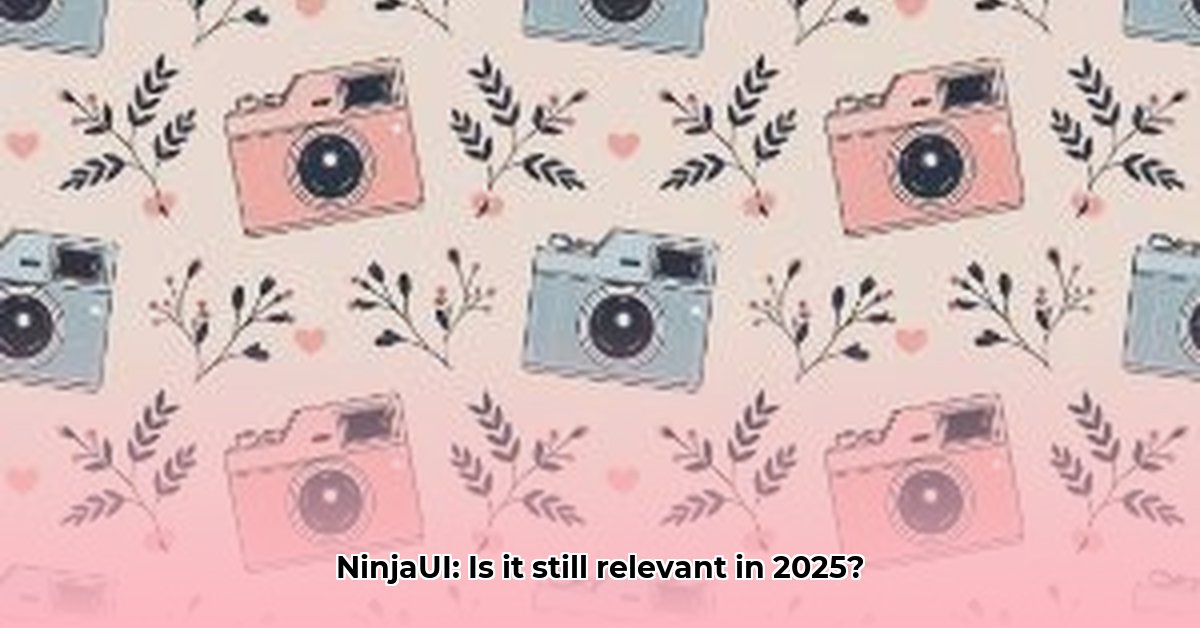
Thinking about using NinjaUI for your website in 2025? It's a jQuery plugin created by Jamie R. Hoover and Faisal N. Jawdat designed to enhance website interactivity. However, its last major update was over a decade ago, making it a risky choice in today's rapidly evolving web development landscape. This review will examine NinjaUI's functionality, security implications, compatibility issues, and offer superior modern alternatives. For future-proof web development, check out this resource.
Functionality and Features: A Relic of the Past
NinjaUI aimed to simplify website interactivity using now legacy tools like Jake, CleanCSS, and UglifyJS. While its GitHub repository offers some insights into its past capabilities, the lack of recent updates immediately raises concerns. Finding clear, up-to-date examples is difficult, and attempting to integrate it into a modern project would likely prove far more time-consuming than learning a contemporary alternative. Is investing time deciphering outdated documentation and battling compatibility issues really worth it, especially when superior solutions exist?
Security and Compatibility: A Recipe for Disaster?
Using outdated software exposes your website to significant security risks. Since NinjaUI hasn't received updates in over a decade, vulnerabilities are extremely likely. Hackers actively target outdated code, putting your website and user data at serious risk. Furthermore, its reliance on jQuery creates significant compatibility challenges with modern frameworks like React, Angular, and Vue.js. Integrating it would be incredibly difficult, requiring extensive modifications—a massive time investment that could be better spent building new features.
Here's a summary of the risks:
| Risk Category | Likelihood | Impact | Practical Implications |
|---|---|---|---|
| Security Holes | Very Likely | Severe | Your website and user data are at risk. |
| Compatibility Problems | Extremely Likely | Significant | Major headaches integrating it with current tech. |
| Maintenance Nightmare | Almost Certain | Moderate | Practically no community support; you're on your own. |
Choosing Your Weapons: Modern Alternatives
Fortunately, numerous robust and actively maintained alternatives exist. React, Angular, and Vue.js offer superior performance, security, and extensive community support. These frameworks constantly receive updates, ensuring compatibility and security. They also provide comprehensive component libraries, streamlining development.
| Framework | Pros | Cons |
|---|---|---|
| React | Large community, vast ecosystem, component reusability, excellent performance | Steeper learning curve initially |
| Angular | Strong structure, comprehensive tooling, good for large applications | Can be verbose, larger bundle size |
| Vue.js | Easy to learn, progressive adoption, efficient performance | Smaller community compared to React or Angular |
The Migration Path: A Phased Approach
Migrating from NinjaUI requires a strategic approach:
- Assessment: Analyze your current NinjaUI implementation to understand its functionality and dependencies.
- Prioritization: Determine the order of migration based on complexity and criticality; start with less important features.
- Component Replacement: Replace individual NinjaUI components with equivalents from your chosen framework.
- Testing: Thoroughly test each migrated component to ensure functionality and performance.
- Iteration: Repeat steps 3 and 4 until all NinjaUI components are replaced.
A phased approach minimizes disruption and allows for thorough testing throughout the process.
The Bottom Line: Avoid NinjaUI
NinjaUI is a significant security risk and presents substantial compatibility challenges. Investing time and resources in modern alternatives like React, Angular, or Vue.js is crucial for building secure, performant, and maintainable web applications. Don't let outdated technology jeopardize your project; choose a solution that empowers you to build for the future.